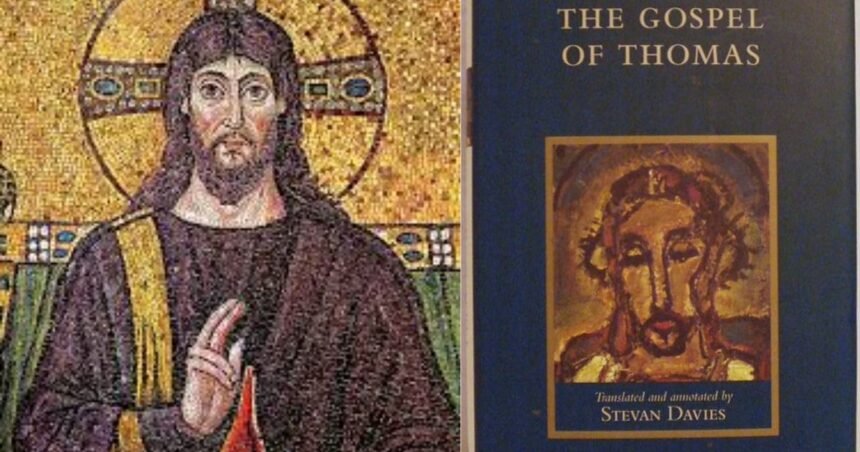Jesus is portrayed differently in the ancient Gospel of Thomas than in the conventional one. In this rendition, he is portrayed more as a New Age guru whose teachings directly contradict traditional church views, rather than a religious leader who performs miracles and preaches to the crowds.
According to accounts, Jesus’ tomb was “discovered” in an “unbelievable” discovery.
Unlike the gospels found in the Bible, this “banned” gospel implies that believers just need self-awareness and self-discovery, not churches or rituals.
This ancient document, which was first found in Egypt in 1945, has lately become well-known online thanks to content creator Nick Di Fabio’s sharing of it with his followers. According to MailOnline, he asserted that some academics think it might be the first recorded account of Jesus’ teachings. A NASA discovery connected to Jesus’ crucifixion, meanwhile, “reveals the exact day He died.”
Di Fabio emphasized a theme that runs throughout the gospel: “The kingdom is within you”—not in structures or ceremonies. According to the Mirror, this statement directly challenges the hierarchy, temples, and religious authority that are the foundation of the modern Catholic Church.
The fascinating opening statement of the Gospel of Thomas reads, “These are the secret sayings which the living Jesus spoke and which Didymos Judas Thomas wrote down.” Because of this, many people think it was written by the apostle Thomas, who is well-known for being the disciple who questioned Jesus’ resurrection.
The Real Story of Jesus.
The story you were told was edited.
The man was real.
But the story was hijacked folded, inverted, weaponized.Jesus didn’t come to start a religion.
He came to end the control system that religions were built on.Not just Rome.
Not just the priests.…— B (@QuantumTumbler) April 20, 2025
Due to the book’s “Gnosticism” message—which contradicts early Church doctrines on faith and obedience—that salvation is based on individual illumination, it was excluded from the canonical Bible. Its omission was also influenced by questions about the authorship and date.
“Split a piece of wood, and I am there” is one of the powerful passages from the document that Di Fabio said have “shocked theologians for centuries.” “Whoever discovers the interpretation of these sayings will not taste death.” He read these fascinating quotations as a sign that Jesus was present everywhere and that awareness, not merely conformance, was the way to go.
Di Fabio contended that it was purposefully buried to protect the concepts it contained from rulers who would stifle the desire for spiritual liberty after it was discovered inside a clay jar close to Nag Hammadi.
7. Why They Banned It
The book was too controversial:
• Revealed “forbidden” knowledge
• Contained strange prophecies
• Challenged official doctrine
• Questioned angel natureEarly Church leaders likely feared its potential to create theological chaos. pic.twitter.com/DqmKhSValB
— Nick Di Fabio (@NickDiFabio1) January 27, 2025
The Gospel of Thomas stands out as a collection of sayings, in contrast to the accounts of Jesus’ life, crucifixion, and resurrection found in Matthew, Mark, Luke, and John. It offers a number of maybe illuminating but perplexing lessons in place of parables and stories of miracles.
The origins of the Gospel of Thomas are a contentious topic among academics. According to others, it may be as old as the middle of the first century, which would make it one of the oldest accounts of what Jesus said.













